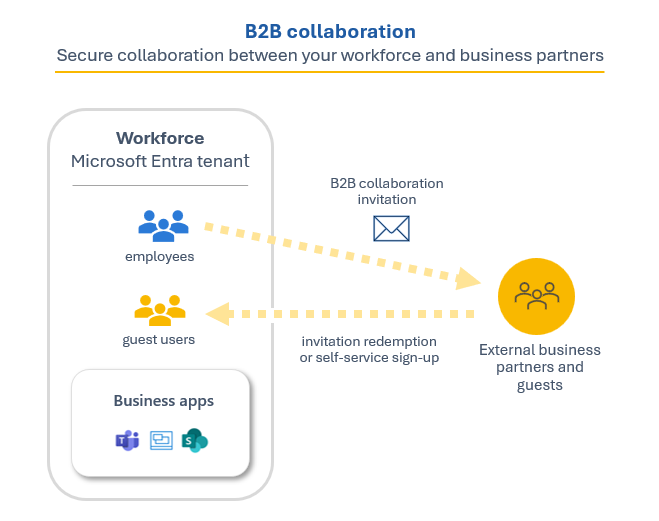25 Aug pricing services for B2B Practical Strategies to Maximize Revenue and Client Value

Effective pricing services for B2B require a blend of market insight, client-centric value articulation, and operational discipline. For many service providers, the gap between technical capability and profitable delivery is bridged by a pricing strategy that reflects cost, value, risk, and scalability. Learn how modern approaches transform pricing from an administrative task into a strategic lever — and explore concrete steps you can apply today. pricing services for B2B https://www.partner2b.com/pricing
Start by recognizing that B2B service buyers are primarily looking for predictable outcomes and demonstrable ROI. Unlike commodity products, services often involve human capital, customization, and ongoing relationships. That means pricing must signal expertise, align incentives, and mitigate perceived risk. Consider packaging services around outcomes (e.g., uptime SLAs, process improvements, lead generation volumes) rather than hours. Outcome-based pricing can command premiums when you can reliably measure and deliver the promised result.
Segment your market by buyer needs, willingness to pay, and procurement behavior. Large enterprises often prioritize risk mitigation and integration with existing systems, and they may value white-glove support and compliance guarantees. Mid-market customers might focus on cost-effectiveness and speed of deployment, while startups seek flexibility and clear growth corridors. Each segment requires tailored pricing tiers, contract terms, and commercial collateral that maps features to tangible benefits.
Choose the right pricing model for the service mix. Common B2B models include time-and-materials, fixed-price projects, subscription-based retainer models, tiered packages, usage-based billing, and hybrid outcome-linked agreements. Time-and-materials is simple and low-risk for providers but hard for buyers who want predictability. Fixed-price contracts allocate risk to the provider and demand excellent scoping. Subscriptions and retainers create stable recurring revenue and deepen client relationships, but they must be managed with clear scopes and renewal mechanics. Usage-based models scale with client success and can align incentives, though they require reliable metering and client transparency.
Cost-plus pricing still has a role, particularly when capacity planning and utilization are core challenges. However, relying solely on internal cost metrics fails to capture customer perceived value. Combine cost analysis with value-based adjustments: quantify the client’s financial upside (revenue increase, cost avoidance, risk reduction) and position your price to capture a share of that created value while remaining competitive.
Build a pricing architecture that supports simplicity and flexibility. Design a limited set of well-differentiated packages with clear feature and support boundaries. Provide add-ons for customization and optional services to avoid overloading core packages. Use tier names and feature descriptions that map to buyer outcomes and use cases, not internal team names. Clarity reduces negotiation friction, simplifies sales training, and shortens sales cycles.
Discounts and negotiations are inevitable in B2B. Establish disciplined guardrails: define list price, authorized discount bands by role, and the approval workflow for deeper concessions. Make concessions conditional — offer temporary discounts for multi-year commitments, volume guarantees, or pilot-to-contract pathways. Track discounting behavior and make it a measurable KPI for sales leaders, linking it to customer lifetime value (CLTV) and deal profitability rather than closed-won counts alone.

Leverage metrics to monitor pricing performance. Key indicators include average contract value (ACV), customer acquisition cost (CAC), gross margin by segment, churn rate, renewal rate, and revenue per full-time equivalent (FTE) for service delivery. For outcome-based pricing, implement measurement frameworks that both you and your clients trust. Transparent dashboards and joint governance reduce disputes and reinforce the value narrative.
Invest in packaging and sales enablement so the pricing story is consistently told across marketing, sales, and delivery. Create simple calculators and ROI artifacts that allow prospects to model outcomes. Equip sales teams with objection-handling playbooks that focus on value, not just features. Case studies with quantified results are particularly persuasive for B2B buyers who need internal justification for investments.
Automation and tooling unlock scalable pricing operations. Contract lifecycle management (CLM), quoting configurators, and billing systems reduce manual errors and accelerate time-to-cash. For usage-based or outcome-linked models, robust metering and reconciliation processes are essential. Integrate pricing tools with CRM and finance systems to maintain a single source of truth for pricing, discounts, and performance metrics.
Governance and cross-functional alignment are critical. Pricing is not solely a commercial function; it requires input from finance, delivery, legal, and product. Establish a pricing committee to evaluate new offers, approve exceptions, and review performance. Regularly update price lists and terms to reflect cost inflation, market shifts, or improved service capability. A cadence of quarterly pricing reviews prevents drift and preserves margins.
Consider strategic experimentation with limited pilots to validate new models before a full rollout. A controlled pilot — for example, a variable fee tied to a specific KPI for a handful of willing customers — can reveal operational gaps, measurement issues, and client perceptions without exposing the whole book of business. Use learnings to refine contracts, SLAs, and delivery workflows before scaling.
Communicate renewals and upsell opportunities well in advance. For subscription and retainer models, the renewal conversation is an opportunity to demonstrate ongoing value and expand scope. Prepare renewal briefs that summarize achieved outcomes, benchmarked performance, and tailored recommendations for next-phase engagement. Clients who see consistent, measurable improvement are more likely to accept price increases aligned to enhanced value.
Finally, cultivate a pricing culture that values transparency and customer-centricity. Encourage teams to surface feedback from prospects and clients about price sensitivity and perceived barriers. Use that feedback to iterate on packaging, messaging, and delivery. When pricing is treated as a strategic capability rather than an administrative detail, B2B service providers unlock healthier margins, lower churn, and stronger client partnerships.
In summary, effective pricing services for B2B blend segmentation, value-based design, operational rigor, and continuous measurement. Adopt models that align incentives with clients, automate where possible, and govern pricing decisions with cross-functional input. With disciplined execution, pricing becomes a durable competitive advantage that accelerates growth and reinforces long-term client value.





